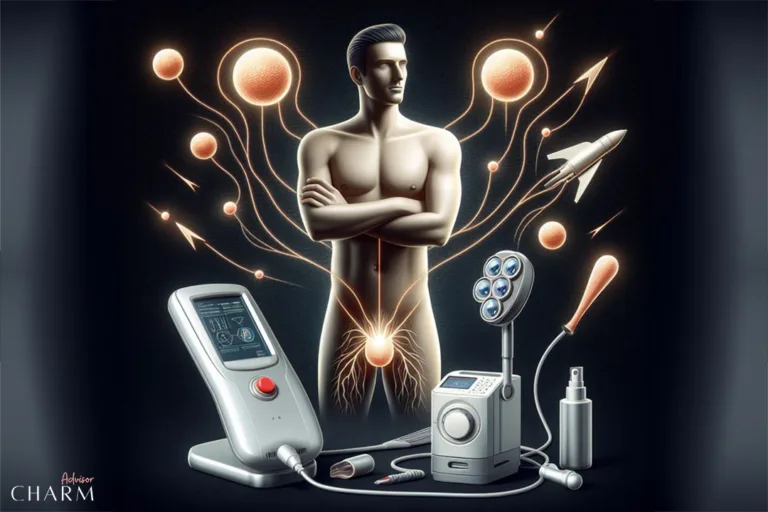
Unwanted hair can be a major nuisance, but electrolysis hair removal can be a permanent solution. Electrolysis is a safe and effective way to remove hair from any part of the body. In this article, we will discuss everything you need to know about electrolysis hair removal.
Table of Contents
What is Electrolysis Hair Removal?
Electrolysis hair removal is a permanent method of removing unwanted hair from the body. It works by using a fine needle inserted into each hair follicle to send an electric current to destroy the root of the hair. This process is repeated for each hair follicle until all the hair in the targeted area is removed.
The electric current damages the hair follicle, preventing hair regrowth. Unlike other hair removal methods, such as shaving or waxing, electrolysis can achieve permanent hair removal.
Electrolysis can be performed on any part of the body, including the face, arms, legs, underarms, bikini area, and back. It works on all skin tones and hair types, including fine, light-colored hair that other methods might miss.
Electrolysis hair removal is a safe and effective procedure that has been used for over a century. It is the only FDA-approved method for permanent hair removal.
Types of electrolysis hair removal:
There are three main types of electrolysis hair removal:
1. Galvanic electrolysis:
This method uses a direct current to create a chemical reaction that destroys the hair follicle.
2. Thermolysis electrolysis:
This method uses an alternating current to heat and destroy the hair follicle.
3. Blend electrolysis:
This method combines both galvanic and thermolysis electrolysis to provide a more effective treatment.
The type of electrolysis used depends on the individual’s hair and skin type, as well as the area being treated. A trained electrologist will determine the best type of electrolysis for each person.
Benefits of Electrolysis Hair Removal
- Permanent hair removal: Electrolysis is the only FDA-approved method of permanent hair removal. Once the hair is treated with electrolysis, it will not grow back. This makes it a highly effective option for people who want to get rid of unwanted hair permanently.
- Suitable for all hair types and skin tones: Unlike other hair removal methods, electrolysis works on all types of hair and skin tones. It is effective on both light and dark hair, and on any skin color.
- Precision: Electrolysis can target individual hair follicles with precision, making it highly effective for removing hair in small or sensitive areas like the eyebrows, upper lip, and bikini area.
- Safe: Electrolysis is a safe procedure when performed by a trained and licensed electrologist. The risks of complications are low, and the treatment can be tailored to your individual needs and preferences.
- Minimal discomfort: Although everyone’s pain tolerance is different, electrolysis is generally not considered a painful procedure. Some people describe a slight tingling sensation, but this can be managed with a topical anesthetic if necessary. 6. Improved self-confidence: For many people, unwanted hair can be a source of embarrassment and self-consciousness. Electrolysis can help to permanently remove this hair, leading to improved self-confidence and a better quality of life.
Overall, electrolysis is a highly effective and safe method of permanent hair removal that can be used on all hair types and skin tones. Its precision and minimal discomfort make it a popular choice for those who want to remove unwanted hair in small or sensitive areas, and its permanent results can lead to improved self-confidence and a better quality of life.
Risks and Complications
While electrolysis is generally a safe procedure, there are some risks and potential complications associated with it.
One of the most common risks is slight reddening of the skin during or immediately after treatment. This is a normal reaction and usually goes away on its own. People with darker skin may also experience temporary dark spots on their skin. However, these spots usually fade over time and should not be treated with bleaching cream.
In rare cases, electrolysis can lead to infection, scarring, or keloid formation. These complications may occur if the procedure is not done correctly or if the equipment used is not sterile. It is important to choose a certified and professional electrolysis practice to minimize the risk of these complications.
In addition, electrolysis can be a time-consuming process as it requires multiple sessions to achieve permanent hair removal. This may be a disadvantage for some people who are looking for a quicker solution.
Overall, the risks and complications of electrolysis are relatively low when performed by a qualified and experienced electrologist. It is important to discuss any concerns or potential risks with the electrologist before the procedure.
Electrolysis hair removal is a safe procedure, but there are some risks and complications to be aware of. The most common risk is minor skin irritation, such as redness or swelling. In rare cases, infection or scarring can occur if the procedure is not done correctly. However, if you choose a certified, professional electrolysis practice, the risks are very low.
What to Expect During the Procedure?
During electrolysis hair removal, a trained electrologist will use a small probe to target each individual hair follicle. The probe is inserted into the hair follicle and a low-level electrical current is passed through it. This electrical current destroys the hair follicle and prevents hair growth.
The procedure can take anywhere from a few minutes to several hours, depending on the size of the treatment area and the amount of hair to be removed. Before the procedure, the electrologist will clean the treatment area and may apply a topical anesthetic to help minimize any discomfort.
During the procedure, the electrologist will use a small, fine needle-like probe to deliver the electrical current to each hair follicle. This process can cause a mild stinging or pricking sensation, but it is generally well-tolerated. The electrologist will work methodically across the treatment area, removing each hair follicle one at a time.
After the procedure, the treatment area may be red, swollen, or slightly tender. This is normal and should subside within a few hours. Some people may experience temporary darkening of the skin in the treatment area, but this is usually temporary and fades within a few days.
It’s important to follow the electrologist’s aftercare instructions to promote healing and prevent infection. This may include avoiding excessive sweating, avoiding direct sunlight, and applying an antibiotic ointment or other topical treatment as directed.
Recovery and Outlook
After an electrolysis hair removal procedure, you can resume your normal activities immediately. You may experience some minor skin irritation, but it should subside within a few hours. It typically takes several sessions to achieve permanent hair removal, but the exact number of sessions depends on the individual.
Choosing an Electrologist
When considering electrolysis hair removal, it is important to find a reputable and qualified electrologist. Here are some key factors to consider when choosing an electrologist:
- Qualifications: Check if the electrologist is licensed or certified by the state. If the state doesn’t regulate electrologists, make sure the provider attended an accredited electrology school.
- Recommendations: Ask for recommendations from family, friends, or healthcare providers. Look for reviews or testimonials on the electrologist’s website or social media pages.
- Consultation: Schedule a consultation with the electrologist before committing to a treatment plan. Use this opportunity to ask questions about the procedure and the electrologist’s experience.
- Cleanliness and hygiene: Check if the electrologist follows proper cleaning and sterilization procedures. Look for a clean and well-maintained workspace and make sure you feel comfortable with the electrologist.
- Cost: Ask about the cost of the procedure and if it is covered by insurance. Compare prices among different electrologists and make sure the cost fits within your budget.
Choosing the right electrologist can ensure a safe and effective electrolysis hair removal experience. When choosing an electrologist for electrolysis hair removal, it’s important to look for someone with the proper qualifications and experience. Check that their certificate is up to date and on display and ask about their training and experience. It’s also a good idea to ask for recommendations from friends or family members who have undergone electrolysis hair removal.
Comparison to Laser Hair Removal Methods
Laser hair removal and electrolysis are both popular methods for permanent hair removal, but they have different approaches and benefits. While both methods permanently remove hair, they target different areas of the hair follicle.
Laser hair removal uses a laser to target the pigment in the hair follicle. The heat from the laser damages the hair follicle, which inhibits hair growth. This method is fast and can treat large areas of the body, such as the legs or back. Laser hair removal is also less painful than electrolysis and can treat multiple hair follicles at once.
Electrolysis, on the other hand, uses a small needle to deliver an electric current to the hair follicle. These current damages the hair follicle and prevents hair growth. Electrolysis is effective on all hair types and colors, while laser hair removal is most effective on dark hair. Electrolysis also works on small or hard-to-reach areas like the face, while laser hair removal is not recommended for facial hair.
The downside to laser hair removal is that it can be expensive and require multiple sessions for permanent results. It may also not be as effective on lighter hair colors or fine hair. Electrolysis may take longer per session, but it is generally less expensive and requires fewer sessions overall for permanent hair removal.
Ultimately, the choice between laser hair removal and electrolysis depends on individual factors such as hair type, skin type, and the area being treated. It’s important to consult with a trained professional to determine which method is best for you.
Comparison to Temporary Hair Removal Methods
Electrolysis hair removal is a permanent solution for hair removal, which sets it apart from temporary methods like shaving, waxing, and depilatory creams. While temporary methods are quick and convenient, they often require frequent maintenance and can cause irritation, ingrown hairs, and other skin problems.
Shaving is perhaps the most popular temporary hair removal method. It’s fast and easy, but the results are temporary, and hair typically grows back within a few days. Shaving can also cause razor burn, bumps, and ingrown hairs, especially in sensitive areas like the bikini line and underarms.
Waxing involves applying hot wax to the skin and then removing it quickly, taking the hair with it. This method is more effective than shaving and can last for up to four weeks. However, waxing can be painful, especially in sensitive areas. Waxing can also cause ingrown hairs, and the results are not permanent.
Depilatory creams dissolve the hair at the surface of the skin. These creams can be used on larger areas of the body and don’t cause the same level of pain as waxing. However, the chemicals in the creams can cause skin irritation and allergic reactions.
Compared to these temporary methods, electrolysis hair removal offers a permanent solution to unwanted hair. While it may take several treatments to achieve permanent results, once the hair is gone, it won’t grow back. This makes electrolysis a cost-effective solution over time. Additionally, electrolysis can be performed on any part of the body and on any skin and hair type, making it a versatile option for those seeking a permanent hair removal solution.
While temporary hair removal methods can be messy, time-consuming, and may cause skin irritation. Electrolysis hair removal offers a permanent solution, making it a convenient and cost-effective option in the long run.
Conclusion
Electrolysis hair removal is a safe and effective method of permanently removing hair from the body. While it may take more time than other methods, it offers the benefit of being the only FDA-approved permanent hair removal treatment. It is also suitable for all skin types and hair colors, making it a versatile option for people with different needs.
While the procedure may involve some discomfort and there are risks of infection or scarring if not done correctly, these risks can be minimized by choosing a qualified and experienced electrologist. It is important to research and choose an electrologist carefully, considering factors such as qualifications, recommendations, consultation, and cleanliness and hygiene practices.
Compared to temporary hair removal methods such as waxing and chemical depilatories, electrolysis offers a more long-lasting and permanent solution. Laser hair removal may also offer similar results, but it may not be suitable for all skin and hair types.
Overall, electrolysis hair removal is a viable option for those seeking a permanent solution to unwanted hair. With proper research and careful selection of an electrologist, it can provide a safe and effective way to achieve hair-free skin.
Electrolysis hair removal is a safe and effective way to permanently remove unwanted hair. It’s a versatile option for anyone, regardless of skin type or hair color. While there are some minor risks and complications, choosing a certified, professional electrolysis practice can minimize these risks. With several treatment sessions, you can enjoy a hair-free life.
FAQs
Is electrolysis painful?
Electrolysis is generally not painful, but some people may feel a mild discomfort during the procedure. Your electrologist can adjust the settings to ensure your comfort.
How Many Sessions Are Needed For Complete Hair Removal?
The number of sessions needed for complete hair removal depends on several factors, including the amount and location of hair, your skin type, and your individual response to the treatment. Most people require several sessions over a period of months to achieve permanent hair removal.
Are there any side effects of electrolysis?
Some people may experience redness, swelling, or scabbing in the treated area. These side effects are usually mild and temporary.
Can Electrolysis Be Performed On Any Part Of The Body?
Yes, electrolysis can be performed on any part of the body, including the face, arms, legs, underarms, bikini area, and back.
How Much Does Electrolysis Cost?
The cost of electrolysis varies depending on the location of the practice, the experience of the electrologist, and the amount of hair being removed. Typically, electrolysis costs between $30 and $200 per session.
Is Electrolysis Safe?
Electrolysis is generally considered safe when performed by a trained and licensed electrologist. It is a FDA-approved method of permanent hair removal.
How Can I Prepare For An Electrolysis Session?
Your electrologist will provide you with specific instructions on how to prepare for the session. In general, you should avoid tweezing or waxing the hair in the treated area for at least a week before the session, and avoid sun exposure and the use of certain skincare products for a few days before the session.
References
American Electrology Association (AEA): The official website of the AEA provides information about electrolysis, its benefits, and a directory of certified electrologists. (Website: https://www.electrology.com/)
DermNet NZ – Electrolysis: DermNet New Zealand provides detailed information about electrolysis, including its history, techniques, and practical considerations for patients. (Website: https://dermnetnz.org/topics/electrolysis/)








